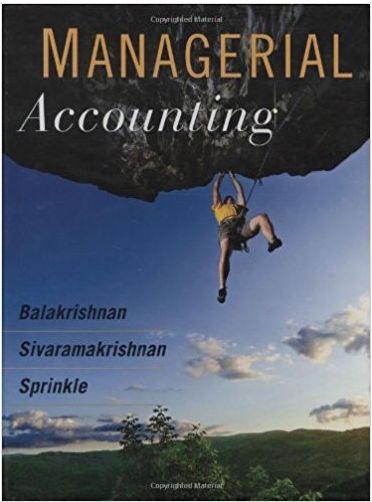Question
The Great Lakes Corporation (GLC) was established in 1994. Glenn Jones founded the corporation, which was privately owned at the time. GLC was originally formed
The Great Lakes Corporation (GLC) was established in 1994. Glenn Jones founded the corporation, which was privately owned at the time. GLC was originally formed to provide ship repair services and quickly earned a Department of Defense (DOD) certified Alteration Boat Repair (ABR) designation. Among its specialties were structural welding, piping system installation and repairs, electrical, painting, rigging, machinery and dry-lock work, as well as custom sheet metal fabrication. Other divisions of GLC included Habitability Installation, Industrial Contracting, and Alteration/Installation Teams (AIT). In 1998, the company went public and its initial public offering was very successful. The stock price had risen from its initial value of $10 to its current level of $35 per share. There were currently 5 million shares outstanding. In 1999, the company issued 30-year bonds at par, with a face value of $1000 and a coupon rate of 10% per year, and managed to raise $40 million for expansion. Currently, the AA-rated bonds had 25 years left until maturity and were being quoted at 91.5% of par. Over the past year, GLC utilized a new method for fabricating composite materials that the firm’s engineers had developed. In June of last year, management established the Advanced Materials Group (AM Group), which was dedicated to pursuing this technology. The firm recruited Larry Rock, a senior engineer, to head the AM Group. Larry also had an MBA from a prestigious university under his belt. Upon joining GLC, Larry realized that most projects were being approved on a “gut feel” approach. There were no formal acceptance criteria in place. Up until then, the company had been lucky in that most of its projects had been well selected and it had benefited from good relationships with clients and suppliers. “This has to change,” said Larry to his assistant Stephanie, “we can’t possibly be this lucky forever. We need to calculate the firm’s hurdle rate and use it in the future.” Stephanie, who had great admiration for the boss, replied, “Yes, Larry, why don’t I crunch the numbers and give them to you within the next couple of days?” “That sounds great, Stephanie,” said Larry. As Stephanie began looking at the financial statements, she realized that she was going to make some assumptions. First, she assumed that the new debt would cost about the same as the yield on outstanding debt and would have the same rating. Second, she assumed that the firm would continue raising capital for future projects by using the same target proportions as determined by the book values of debt and equity (see Table 1 for recent balance sheet). Third, she assumed that the equity beta (1.5) would be the same for all the divisions. Fourth, she assumed that the growth rates of earnings and dividends would continue at their historical rate (see Table 2, for earnings and dividend history). Fifth, she assumed that the corporate tax rate would be 34% and finally, she assumed that the flotation cost for debt would be 5% of the issue price and that for equity would be 10% of selling price. The 1-year Treasury bill yield was 4% and the expected rate of return on the market portfolio was 10%.
Questions: Q1. Why do you think Larry wants to estimate the firm’s hurdle rate? Is it justifiable to use the firm’s weighted average cost of capital as the divisional cost of capital? Please explain.
Q2. How should Stephanie go about figuring out the cost of debt? Calculate the firm’s cost of debt.
Q3. Why is there a cost associated with a firm’s retained earnings?
Q4. How can Stephanie estimate the firm’s cost of retained earnings? Should it be adjusted for taxes? Please, explain.
Q5. Calculate the firm’s average cost of retained earnings.
Q6. Can flotation costs be ignored in the analysis? Explain.
Q7. How should Stephanie calculate the firm’s WACC? Calculate it and explain the various steps.
Q8. Can Larry assume that the hurdle rate calculated by Stephanie would remain constant?
Table 1
| Balance Sheet (‘000s) | |
| Cash 5000 Accounts Receivables 10000 Inventory 20000 Total Current Assets 35000 Land & Buildings (net) 43000 Plant and Equipment (net) 45000 Total Fixed Assets 88000 Total Assets 123000 | Accounts Payable 8000 Accruals 5000 Notes Payable 10000 Total Current Liabilities 23000 Long-term debt 40000 Common stock (5 million shares outstanding) 50000 Retained Earnings 10000 Total liabilities and equity 123000 |
Table 2
| Sales, Earnings, and Dividend History (‘000s) | |||
| Year | Sales | Earnings per share | Dividends per share |
| 1998 | $24,000,000 | $0.48 | $0.10 |
| 1999 | 28,800,000 | 0.58 | 0.12 |
| 2000 | 36,000,000 | 0.72 | 0.15 |
| 2001 | 45,000,000 | 0.86 | 0.18 |
| 2002 | 51,750,000 | 0.96 | 0.20 |
| 2003 | 62,100,000 | 1.06 | 0.22 |
| 2004 | 74,520,000 | 1.20 | 0.25 |
Step by Step Solution
3.31 Rating (151 Votes )
There are 3 Steps involved in it
Step: 1
1 Larry would like to assess the hurdle rate of the company because it will give him a standard extension to measure the future investment proposals feasibility The company has been using the gut feel ...
Get Instant Access to Expert-Tailored Solutions
See step-by-step solutions with expert insights and AI powered tools for academic success
Step: 2

Step: 3

Ace Your Homework with AI
Get the answers you need in no time with our AI-driven, step-by-step assistance
Get Started


